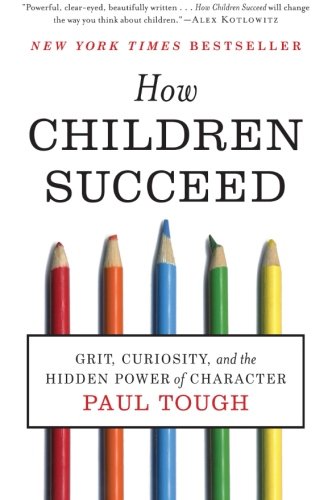
How do you rate for the following personal qualities?
- Grit
- Self-control
- Zest
- Social intelligence
- Gratitude
- Optimism
- Curiosity
These key character traits are good predictors of life satisfaction and high achievement. If you possess these qualities then the chances are that you will have a successful and happy life. Or perhaps you are already having one.
Note that traditional intelligence, as purportedly measured by IQ tests, is not on the list. Not only is it not highly correlated with life satisfaction, it isn’t even correlated with financial success. The book’s message is that instead of trying to cram our children full of knowledge, we need to help them develop traits that we actually know will help them to lead happy and fulfilling lives. This goes for all children, but particularly those who are poor or otherwise disadvantaged.
When I say those things aren’t correlated, I mean that they are in fact correlated but it has been shown using regression analysis that there is no causal relation between them. Similarly, there is a strong correlation between an American’s height, and whether the last letter of his or her name is a consonant; but there is no causal relation. In this case there is an underlying third factor that causes both of the others: the person’s gender.
Apart from all the theory, the book has some decent practical advice. I really like the MCII technique. MCII stands for Mental Contrasting with Implementation Intentions. That’s a mouthful, and explaining that it’s a metacognitive goal-setting strategy may not help much either. It is really just a third way between two common but ineffective strategies. Optimists favour indulging: visualising your goal vividly and hoping that this will somehow make it happen. Obviously this isn’t going to do do much, no matter how many times you cross you fingers and watch your DVD of The Secret. Pessimists, of course, favour dwelling on all the reasons why things won’t work and the problems that will crop up. Clearly, neither of these approaches is especially good.
MCII is a combination of the two: you strongly visualise your goal, but also the obstacles that could prevent you reaching it. Visualising the goal helps you to plan ways to overcome the obstacles, should they occur. Essentially it helps you to anticipate difficulties and formulate rules for dealing with them. (Similarly, I have long advocated anticipating regret, and using simple rules.)
A basic rule that you apply without thinking about it is also called a habit. Angela Duckworth, the originator of many of the ideas in this book, says that habit and character are essentially the same thing. Being “a good person” is just the same thing as being “a person with good habits”: conscientious people are simply those people whose default response in most situations is the socially acceptable, generally beneficial option. The more you have to think about what to do in any situation, the more likely you will take the easy, selfish, “bad” option. Better to develop automatic good habits instead. I have applied this in numerous situations, from responding to difficult people to getting up early in the morning. This is the do good, be good principle as described in Timothy Wilson’s Redirect.
There is a big benefit of identifying character with habits. “Character” is often thought of as an innate quality that we all have and that we can’t change. Habits, on the other hand, can be learned with some effort, and unlearned too. When we realise that our character is just the sum of our habits, we see that we can change our character for the better.
As seemingly required by some unwritten publishers’ agreement, How Children Succeed contains descriptions of both Mischel’s Marshmallow Test and the Milgram Experiments. I’m sure I have read about these experiments in at least ten different books. I wonder if Mischel and Milgram suspected all those decades ago that their experiments would become ubiquitous in the popular psychology press.
Mischel’s experiment, at least, is quite relevant to this book. The children who didn’t eat the marshmallow obviously had self-control, one of the magic seven character strengths. But why did they have such self-control? Paul Tough writes that it’s down to the children’s early life experiences and environment, and these are often compromised by poverty and poor education. Governments try to solve these problems but Tough points out that this is counterproductive: trying to solve two very hard problems at once is biting off too much in one go. We should focus first on childhood poverty, especially infant poverty; fix that and most of the work is done. No point ignoring poverty and focusing on education: by the time poor children enter the education system, the damage has already been done.